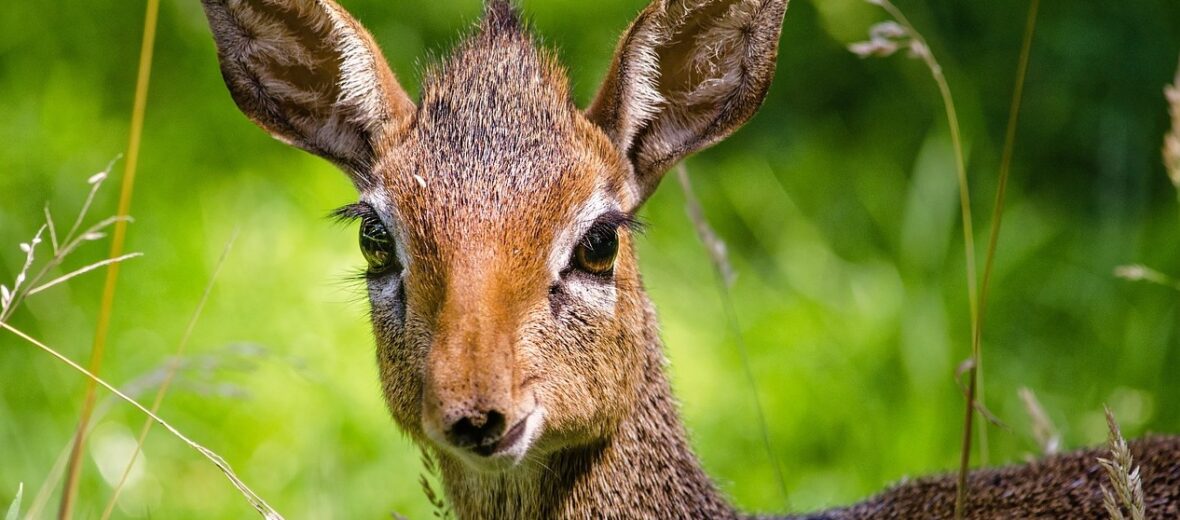
The dik-dik is a small species of antelope that lives in the bushlands of eastern and southern Africa. They are beneficial to other animals in a couple ways. First, they serve as prey animals for larger predators like leopards, caracals, lions, hyenas, wild dogs, and humans. Secondly, they serve as sort of an alert system for other prey animals. They will sound the alarm with their chirp, signalling the arrival of a predator.
First the Stats…
Scientific name: Madoqua
Height: Up to 16 inches
Weight: Up to 11 lbs.
Length: Up to 2.1 feet
Lifespan: Up to 18 years
Now on to the Facts!
1.) Males run at each other, stop just short of running into each other, and then nod their heads and turn around. This behavior continues until one male gives up.
2.) Eating foliage, shoots, fruit and berries, these cute herbivores (eat plant matter) get most of their hydration via the plants they eat.
3.) Dik-diks get there name from the sound of their alarm call.
4.) Females have only 1 fawn at a time.
5.) Being monogamous (mate for life), dik-diks find a mate and stick with them for life. They also don’t live in herds, but rather in pairs.
But wait, there’s more on the dik-dik!
6.) They are tiny but the West African royal antelope is the smallest antelope. They are about the size of a rabbit.
7.) Dik-diks pant to pump blood through their long noses. Airflow and evaporation cool down the blood before the cooled blood is pumped to the rest of the body.
Did you know…?
The dik-dik can reach speeds up to 26 mph!
8.) They mark their territory with secretions from the glands below their eyes. That black spot below each eye contains a preorbital gland. It creates a dark, sticky liquid. Dik-diks poke their eyes with grass stems and twigs to spread the secretions.
9.) Like all other ungulates, the dik-dik has a 4-chambered stomach and they also chew their cud. What other animal chews its cud? Did you guess a cow? You’re correct.
10.) Dik-diks have prehensile noses that they can use to grasp things like leaves and twigs.
Now a Short Dik-Dik Video!
Now another Short Dik-Dik Video!
Also, check out the Critter Science YouTube channel. Videos added frequently!
Want to suggest a critter for me to write about? Let me know here.



